8 Types of Pelicans
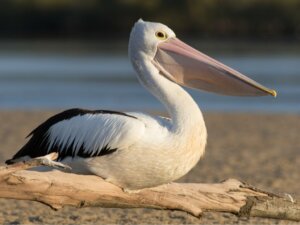

Reviewed and approved by the biologist Samuel Sanchez
There are 8 types of pelicans and they’re all birds with aquatic habits, characterized in general by their elongated beak and their large throat sac, which they capture their prey with. In order not to impede the passage of large fish, its tongue is tiny.
These birds are found all over the world, always close to water. Their size, color and other characteristics vary according to the types of pelicans. Therefore, here you can meet several of them.
8 types of pelicans
All types of pelicans are from the Pelecanidae family, in which two species are threatened – Animal Diversity Web informs us– but neither has become extinct since the threat began in the early seventeenth century. The 8 species that exist are in different parts of the world, although they aren’t found in the interior of South America, in the polar regions and in the open ocean.
In general, they inhabit coastal waters, feeding mainly on fish that they catch near the surface. They’re gregarious birds that travel and hunt together. Their beak, throat pouch, and facial skin turn bright before the breeding season. Learn about the 8 types of pelicans here.
1. Great white or common pelican (Pelecanus onocrotalus )
As its name suggests, this species is white, although it has black feathers on its wings. Its large bill is bright yellow, blue, and red at the tip and its legs are also yellow. The adult specimens are usually between 149 and 175 centimeters long and weigh between 5 and 15 kilos. Its beak is around 11 to 18 inches long.
In Europe, it inhabits lakes, deltas, marshes, and freshwater swamps, as long as there’s a large amount of pasture to nest in. In Africa, it can be found in lowlands and fresh or alkaline water lakes. Fishing is something that only takes him between 8 and 9 in the morning and the rest of the day is spent grooming and bathing.
The common pelican is a species that isn’t currently under threat. There’s a large African population of approximately 75,000 pairs. However, they’re slightly decreasing in Europe, due to human activity.
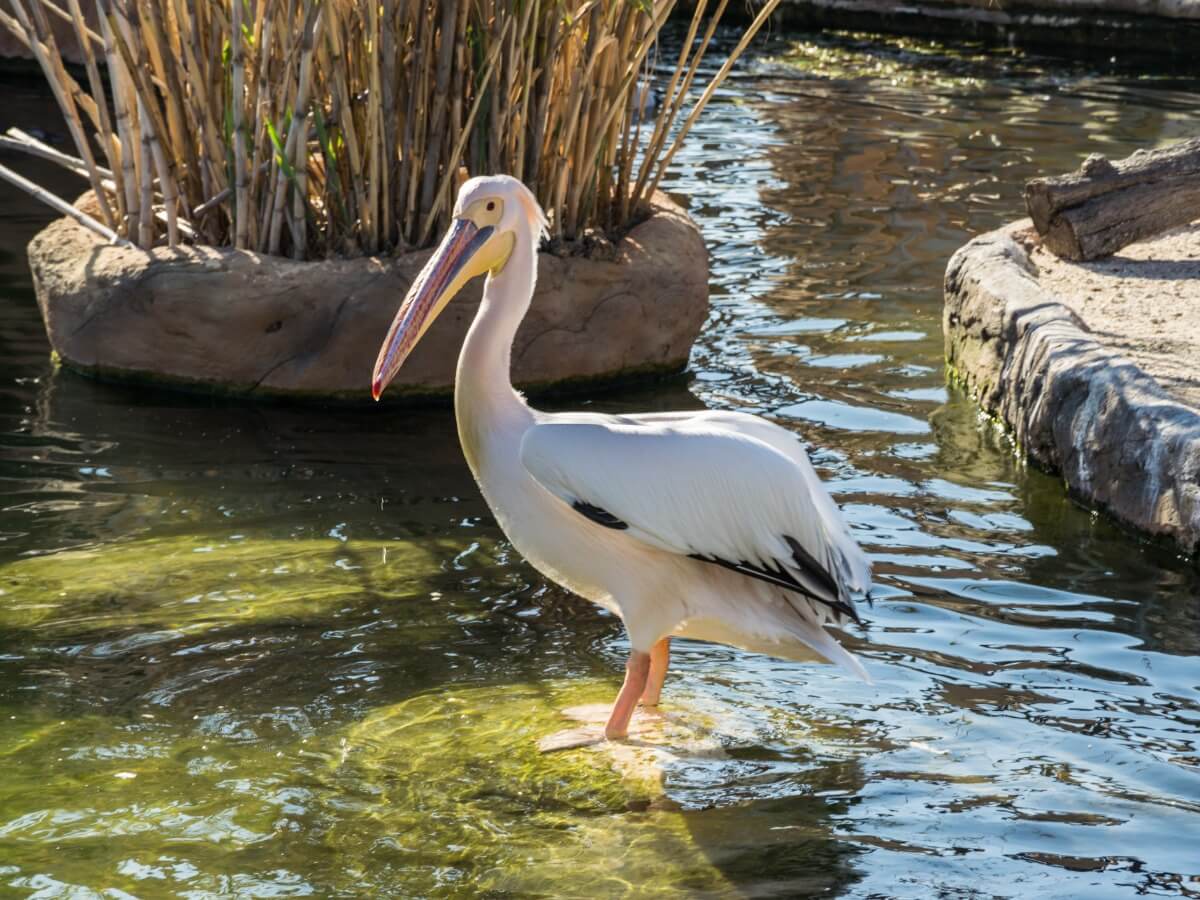
2. Dalmatian pelican (Pelecanus crispus)
This disheveled-looking pelican is grayish-white with a disheveled, raised crest. It frequents rivers, vast wetlands, and estuaries, often in large flocks. It can be confused with the spiky-billed pelican and the great white pelican, but this one has a pale iris, unblemished beak, and gray legs.
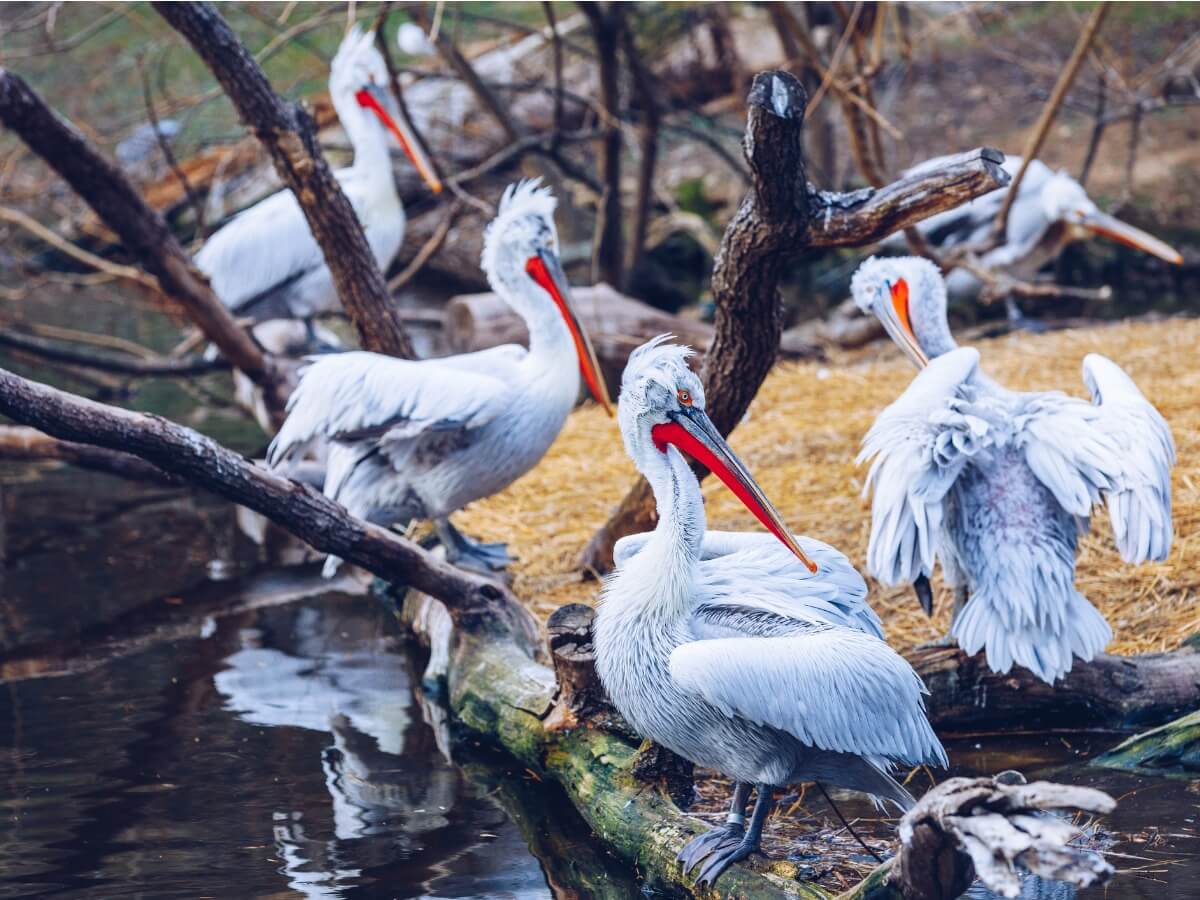
3. Australian pelican (Pelecanus conspicillatus)
These pelicans are native to Australia, Indonesia, Papua New Guinea, the Solomon Islands, and Timor-Leste. They reside in almost any area where fish are abundant, but their main habitat is coasts and sandbanks.
Did you know that pelicans are one of the largest flying birds? Indeed, this type of pelicans has a wingspan of 2.3 to 2.5 meters, can weigh from 4 to 6.8 kilos and has the largest beak of any bird. The average beak length of males is between 42 and 46 centimeters and, in females, it’s 36 to 41 centimeters.
Non-breeding adults have mostly white plumage and their lower back and primary wing feathers are all black. They have dark brown eyes and the beak is light pink, as is their gular sac, which can hold up to 3 gallons of water.
They’re highly sociable diurnal birds that fly together in groups, breed in colonies of up to 40,000 individuals, and are strong fliers that can travel long distances to find food. They’re known to have been airborne for 24 hours.

4. American white pelican ( Pelecanus erythrorhynchos)
This is one of the largest birds in North America. Its wingspan can reach 2.7 meters and it can fly very well, despite its size. The Auburn Foundation says that this species lives quite far inland during the breeding season and forages in shallow lakes, rivers and swamps.
Their colonies are vulnerable to disturbance and loss of habitat. Its total population is believed to have declined during the first half of the 20th century, but since the 1970s it has increased again.
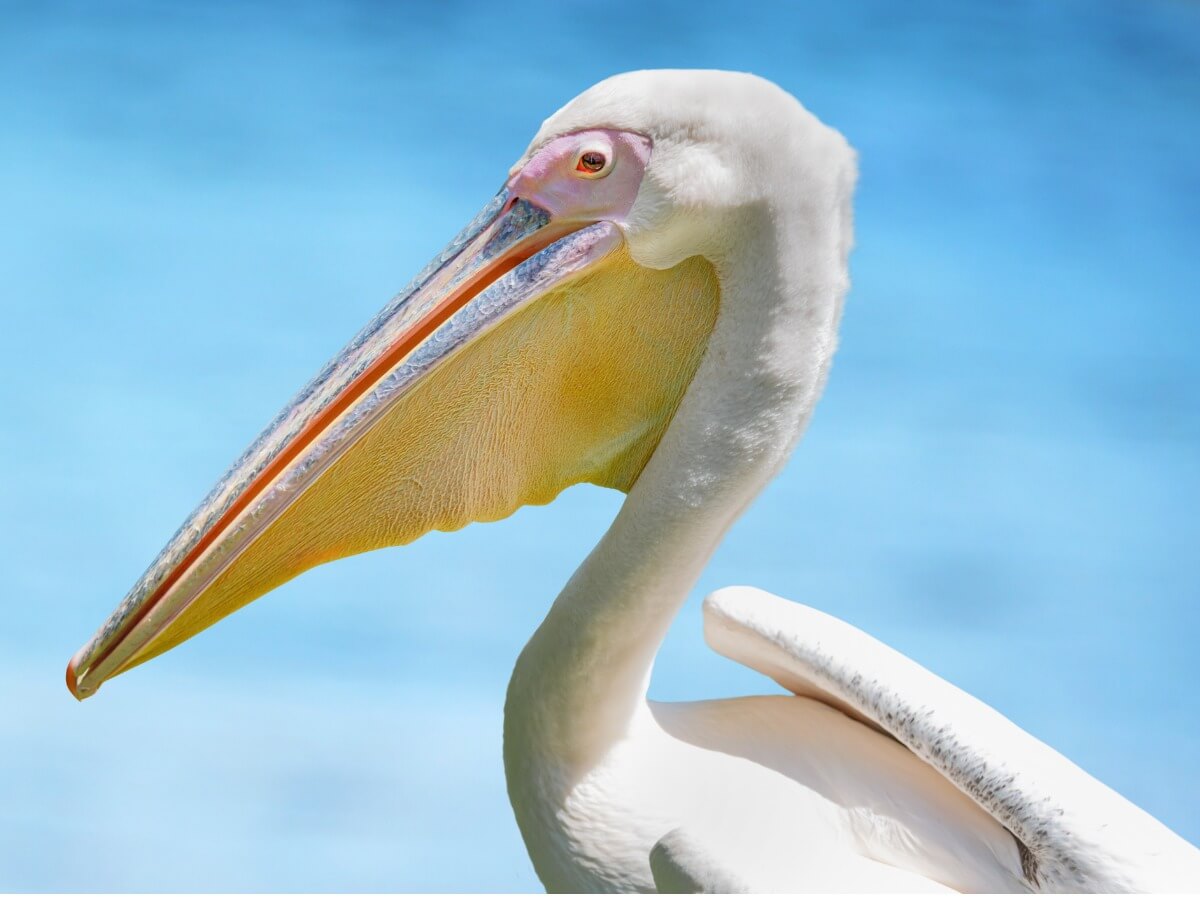
5. Peruvian pelican (Pelecanus thagus)
This bird is found between the coasts and islands between Peru and Chile, specifically in the area affected by the Humboldt current, according to professional sources. Like other types of pelicans, it stands out for its large size, with a wingspan of more than 2 meters. Its head and neck are whitish, although their backs turn dark in the reproductive season. Its long beak is yellowish and reddish and its legs are gray.
Their populations are highly affected by the El Niño or La Niña currents. These variations in temperature cause the fish that these pelicans feed on to move away from the coast or swim deeper.

6. Pink-backed pelican (Pelecanus rufescens)
The length of this bird is 1.2 to 1.5 meters, its wingspan is 2.5 meters, and it weighs about 4 to 7 kilograms. Its general color is greyish white, but it’s more of a brownish color in young birds, and adults have a slightly more pinkish back and lower parts.
This bird is found in Africa, south of the Sahara, although it’s partially migratory. It mainly inhabits freshwater wetlands, but in the Red Sea and the Indian Ocean it can also be found on coasts and islands.

7. Brown pelican (Pelecanus occidentalis)
Brown pelicans are found in the warm, shallow waters of the Pacific and Atlantic oceans. They breed in 10 US coastal states and also inhabit Mexico, Honduras, Costa Rica, Belize, Panama, the Caribbean coast of Colombia, Venezuela, Aruba, and the Galapagos Islands, among other places.
They’re the darkest pelicans on the entire list, weighing 2 to 5 kilos and have a body length of 100 to 137 centimeters. Their beak ranges from 25 to 38 centimeters in length and they have an average wingspan of 2 meters.
In the 1950s and 1960s, DDT (dichlorodiphenyltrichloroethane) was used as a pesticide and passed through the food chain to brown pelicans. This altered the physiology of the brown pelicans, decreasing the strength of the eggshells they produced and causing them to break during incubation.
A repopulation plan was planned in Louisiana in 1968, which lasted until 1976. The brown pelican was included on the endangered species list in 1970. Currently, the population size is stable – or increasing – and they have adapted to hurricanes and the effects of El Niño, which reduce the availability of food.
However, fishing hooks and lines, oil spills, and human activities such as hunting and trapping threaten the population. Even the long-term effects of the 2010 Gulf oil spill are still unknown. During this event, pelicans were the most affected, accounting for 58% of bird deaths and injuries.
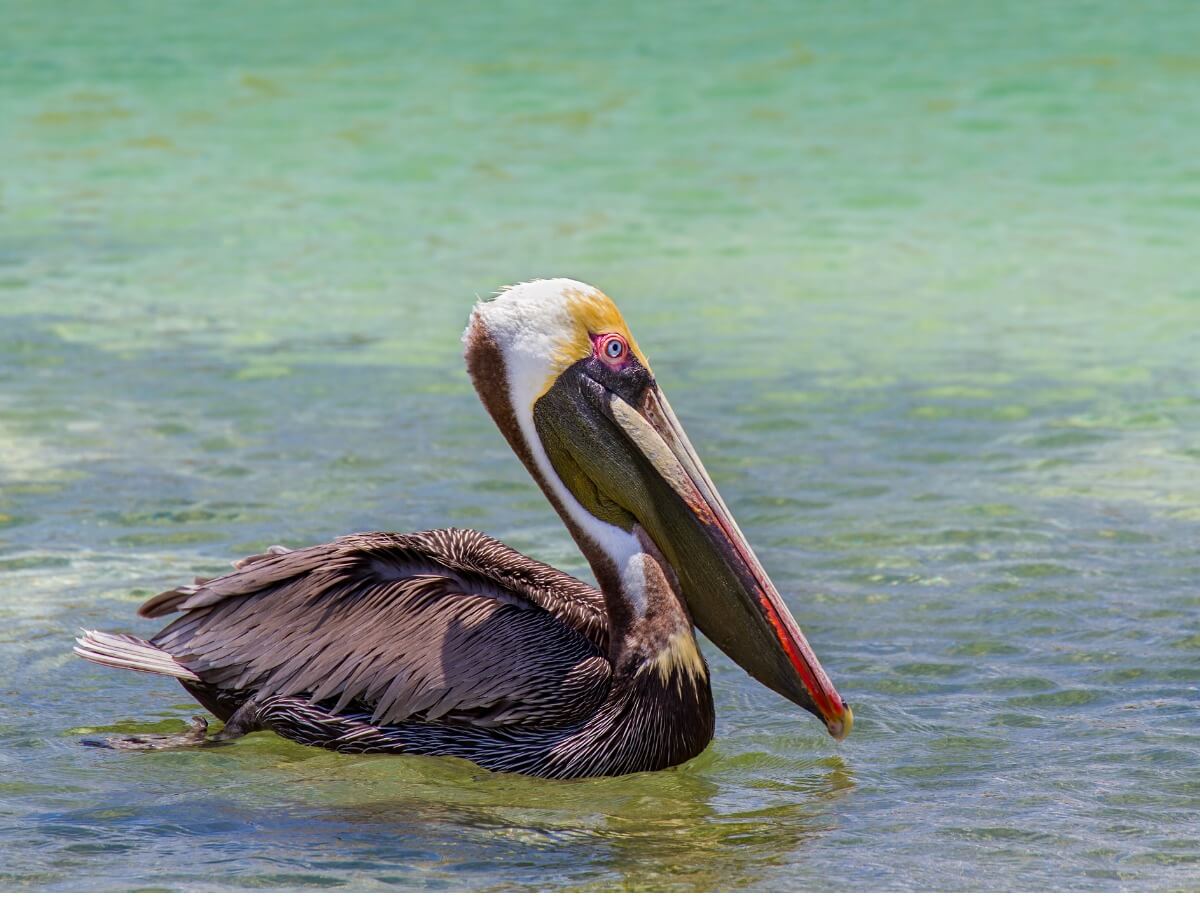
8. Pointed-billed pelican (Pelecanus philippensis )
This species can only be found in Southeast Asia, where the largest remaining populations are in India, Sri Lanka, southern Cambodia, and Sumatra along the coastal areas. They’re relatively small pelicans. Their plumage is mixed with white colors and they have a rather long brownish-gray crest.
Pointed-billed pelicans are classified by the IUCN as a near-threatened species, with an estimated 7,500 to 10,000 individuals currently. Several key hatcheries are now in protected areas, particularly the Tonle Sap Biosphere Reserve in Cambodia. Their loss of habitat is largely due to deforestation, hunting, and contamination by organochlorine pesticides.

The current situation with these 8 types of pelicans
The relationship between pelicans and humans hasn’t been a peaceful one throughout history. People have considered them as competitors for commercial and recreational fishing. For this reason, many of the species mentioned here are in a vulnerable state.
Professionals say that the pelican is generally affected by the decrease in fish – due to overfishing or water pollution – by habitat destruction, entanglement in lines and hooks, and by contaminants such as DDT and endrin, among other consequences. We really do need to protect these birds at all costs.
There are 8 types of pelicans and they’re all birds with aquatic habits, characterized in general by their elongated beak and their large throat sac, which they capture their prey with. In order not to impede the passage of large fish, its tongue is tiny.
These birds are found all over the world, always close to water. Their size, color and other characteristics vary according to the types of pelicans. Therefore, here you can meet several of them.
8 types of pelicans
All types of pelicans are from the Pelecanidae family, in which two species are threatened – Animal Diversity Web informs us– but neither has become extinct since the threat began in the early seventeenth century. The 8 species that exist are in different parts of the world, although they aren’t found in the interior of South America, in the polar regions and in the open ocean.
In general, they inhabit coastal waters, feeding mainly on fish that they catch near the surface. They’re gregarious birds that travel and hunt together. Their beak, throat pouch, and facial skin turn bright before the breeding season. Learn about the 8 types of pelicans here.
1. Great white or common pelican (Pelecanus onocrotalus )
As its name suggests, this species is white, although it has black feathers on its wings. Its large bill is bright yellow, blue, and red at the tip and its legs are also yellow. The adult specimens are usually between 149 and 175 centimeters long and weigh between 5 and 15 kilos. Its beak is around 11 to 18 inches long.
In Europe, it inhabits lakes, deltas, marshes, and freshwater swamps, as long as there’s a large amount of pasture to nest in. In Africa, it can be found in lowlands and fresh or alkaline water lakes. Fishing is something that only takes him between 8 and 9 in the morning and the rest of the day is spent grooming and bathing.
The common pelican is a species that isn’t currently under threat. There’s a large African population of approximately 75,000 pairs. However, they’re slightly decreasing in Europe, due to human activity.

2. Dalmatian pelican (Pelecanus crispus)
This disheveled-looking pelican is grayish-white with a disheveled, raised crest. It frequents rivers, vast wetlands, and estuaries, often in large flocks. It can be confused with the spiky-billed pelican and the great white pelican, but this one has a pale iris, unblemished beak, and gray legs.

3. Australian pelican (Pelecanus conspicillatus)
These pelicans are native to Australia, Indonesia, Papua New Guinea, the Solomon Islands, and Timor-Leste. They reside in almost any area where fish are abundant, but their main habitat is coasts and sandbanks.
Did you know that pelicans are one of the largest flying birds? Indeed, this type of pelicans has a wingspan of 2.3 to 2.5 meters, can weigh from 4 to 6.8 kilos and has the largest beak of any bird. The average beak length of males is between 42 and 46 centimeters and, in females, it’s 36 to 41 centimeters.
Non-breeding adults have mostly white plumage and their lower back and primary wing feathers are all black. They have dark brown eyes and the beak is light pink, as is their gular sac, which can hold up to 3 gallons of water.
They’re highly sociable diurnal birds that fly together in groups, breed in colonies of up to 40,000 individuals, and are strong fliers that can travel long distances to find food. They’re known to have been airborne for 24 hours.

4. American white pelican ( Pelecanus erythrorhynchos)
This is one of the largest birds in North America. Its wingspan can reach 2.7 meters and it can fly very well, despite its size. The Auburn Foundation says that this species lives quite far inland during the breeding season and forages in shallow lakes, rivers and swamps.
Their colonies are vulnerable to disturbance and loss of habitat. Its total population is believed to have declined during the first half of the 20th century, but since the 1970s it has increased again.

5. Peruvian pelican (Pelecanus thagus)
This bird is found between the coasts and islands between Peru and Chile, specifically in the area affected by the Humboldt current, according to professional sources. Like other types of pelicans, it stands out for its large size, with a wingspan of more than 2 meters. Its head and neck are whitish, although their backs turn dark in the reproductive season. Its long beak is yellowish and reddish and its legs are gray.
Their populations are highly affected by the El Niño or La Niña currents. These variations in temperature cause the fish that these pelicans feed on to move away from the coast or swim deeper.

6. Pink-backed pelican (Pelecanus rufescens)
The length of this bird is 1.2 to 1.5 meters, its wingspan is 2.5 meters, and it weighs about 4 to 7 kilograms. Its general color is greyish white, but it’s more of a brownish color in young birds, and adults have a slightly more pinkish back and lower parts.
This bird is found in Africa, south of the Sahara, although it’s partially migratory. It mainly inhabits freshwater wetlands, but in the Red Sea and the Indian Ocean it can also be found on coasts and islands.

7. Brown pelican (Pelecanus occidentalis)
Brown pelicans are found in the warm, shallow waters of the Pacific and Atlantic oceans. They breed in 10 US coastal states and also inhabit Mexico, Honduras, Costa Rica, Belize, Panama, the Caribbean coast of Colombia, Venezuela, Aruba, and the Galapagos Islands, among other places.
They’re the darkest pelicans on the entire list, weighing 2 to 5 kilos and have a body length of 100 to 137 centimeters. Their beak ranges from 25 to 38 centimeters in length and they have an average wingspan of 2 meters.
In the 1950s and 1960s, DDT (dichlorodiphenyltrichloroethane) was used as a pesticide and passed through the food chain to brown pelicans. This altered the physiology of the brown pelicans, decreasing the strength of the eggshells they produced and causing them to break during incubation.
A repopulation plan was planned in Louisiana in 1968, which lasted until 1976. The brown pelican was included on the endangered species list in 1970. Currently, the population size is stable – or increasing – and they have adapted to hurricanes and the effects of El Niño, which reduce the availability of food.
However, fishing hooks and lines, oil spills, and human activities such as hunting and trapping threaten the population. Even the long-term effects of the 2010 Gulf oil spill are still unknown. During this event, pelicans were the most affected, accounting for 58% of bird deaths and injuries.

8. Pointed-billed pelican (Pelecanus philippensis )
This species can only be found in Southeast Asia, where the largest remaining populations are in India, Sri Lanka, southern Cambodia, and Sumatra along the coastal areas. They’re relatively small pelicans. Their plumage is mixed with white colors and they have a rather long brownish-gray crest.
Pointed-billed pelicans are classified by the IUCN as a near-threatened species, with an estimated 7,500 to 10,000 individuals currently. Several key hatcheries are now in protected areas, particularly the Tonle Sap Biosphere Reserve in Cambodia. Their loss of habitat is largely due to deforestation, hunting, and contamination by organochlorine pesticides.

The current situation with these 8 types of pelicans
The relationship between pelicans and humans hasn’t been a peaceful one throughout history. People have considered them as competitors for commercial and recreational fishing. For this reason, many of the species mentioned here are in a vulnerable state.
Professionals say that the pelican is generally affected by the decrease in fish – due to overfishing or water pollution – by habitat destruction, entanglement in lines and hooks, and by contaminants such as DDT and endrin, among other consequences. We really do need to protect these birds at all costs.
All cited sources were thoroughly reviewed by our team to ensure their quality, reliability, currency, and validity. The bibliography of this article was considered reliable and of academic or scientific accuracy.
Animalandia. (s. f.). Pelícano peruano | Animalandia. Recuperado 1 de julio de 2021, de https://animalandia.educa.madrid.org/ficha.php?id=2945
Animapedia. (2018, 18 agosto). Pelícano – Información, características y curiosidades. https://animapedia.org/animales-aereos/pelicano/
Audubon. (2020, 3 junio). Pelícano Blanco Americano. https://www.audubon.org/es/guia-de-aves/ave/pelicano-blanco-americano
colaboradores de Wikipedia. (2021, 30 junio). Pelecanus. Wikipedia, la enciclopedia libre. https://es.wikipedia.org/wiki/Pelecanus
eBird. (s. f.). Pelícano Ceñudo. Recuperado 1 de julio de 2021, de https://ebird.org/ebird/home?siteLanguage=es
Fawkes, R. (s. f.). Pelecanus onocrotalus (great white pelican). Animal Diversity Web. Recuperado 1 de julio de 2021, de https://animaldiversity.org/accounts/Pelecanus_onocrotalus/
McCubbrey, A. (s. f.). Pelecanus philippensis (spot-billed pelican). Animal Diversity Web. Recuperado 1 de julio de 2021, de https://animaldiversity.org/accounts/Pelecanus_philippensis/
Poole, E. (s. f.). Pelecanus conspicillatus (Australian pelican). Animal Diversity Web. Recuperado 1 de julio de 2021, de https://animaldiversity.org/accounts/Pelecanus_conspicillatus/
Scott, V. (s. f.). Pelecanus occidentalis (brown pelican). Animal Diversity Web. Recuperado 1 de julio de 2021, de https://animaldiversity.org/accounts/Pelecanus_occidentalis/
SEO/BirdLife. (2013, 21 octubre). Pelícano rosado. https://seo.org/ave/pelicano-rosado/
This text is provided for informational purposes only and does not replace consultation with a professional. If in doubt, consult your specialist.








